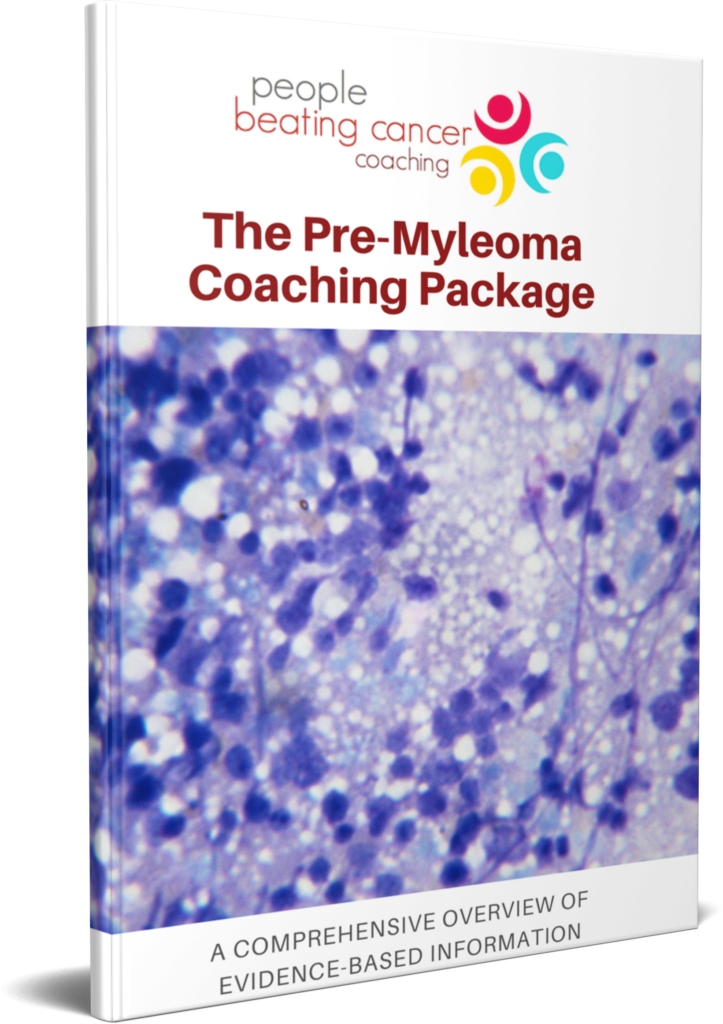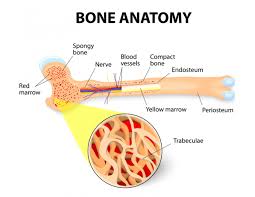
Diagnosed with SMM, SPB, or MGUS?
Learn how you can stall the development of full-blown Multiple Myeloma with evidence-based nutritional and supplementation therapies.
Click the orange button to the right to learn more.
- You are here:
- Home »
- Blog »
- Pre-Myeloma »
- Smoldering Myeloma, Bone- Zometa, Xgeva?
Smoldering Myeloma, Bone- Zometa, Xgeva?

“There are fractures that are associated with reduced bone mineral density (BMD) and others that are associated with reduced density of osteocytes, the key cell of bone remodeling.3…”
Good day David- I was diagnosed with Monoclonal Gammopathy of Undetermined Significance (MGUS) in 2014, then Smoldering Myeloma (SMM) in 2018 and started treatment Revlimid, Velcade, Dexamethasone (RVD) in September 2020, I am responding well to the treatment thus far, minimal side effects.
I am somewhat familiar with your story and what you do, from reading and also through “Beating Multiple Myeloma with a Naturopathic approach” FB group.
I am interested in a coaching call with you and plan on signing up for it. In the meantime, I have an immediate question regarding Zometa treatments which my MM Specialist wants me to start.
I have read and heard of many unfavorable reports regarding Zometa, not sure if Xgeva is very different, although I like the idea of an injection vs infusion.
I currently take OsteoMD which has been clinically studied and reportedly combines four bioavailable nutrients essential to help build and maintain strong, healthy bones and promote skeletal strength.
The bone health formula supposedly provides a potent dosage of Calzbone® and MenaQ7™, two natural ingredients, clinically proven to support bone health.
It also contains vitamin D3 and bioactive calcium hydroxyapatite which supposedly works synergistically to enhance bone mineralization.
Are you aware of any supplements, such as this which can be taken rather than a treatment such as Zometa/Xgeva?
I plan on asking my MM Specialist but I have a feeling he will recommend I do Zometa. My doctor is at Dana Farber and I respect him very much and do not know if he will support my trying a more naturopathic approach to the bone support and obviously I want to do the optimum thing for my bones but would like to minimize some of the untoward effects of the standard drugs.
I thank you in advance for any insight and also for all that you do to support MM patients. I look forward to hearing from you. Diana-
Hi Diana-
While I am sorry to learn of your MGUS, Smoldering Myeloma diagnosis, I believe that you are taking the steps necessary to manage your health.
First and foremost, Dana-Farber is an excellent organization, especially for the pre and full MM patient. Unfortunately, there are some basic drawbacks to conventional oncology for the pre-MM patient.
This is a photo of Dr. Ken Anderson. Great guy. Extremely knowledgeable, experienced MM Specialist.
I will go into the issues in more detail when we talk but conventional standard-of-care therapies are, in my experience anyway, much too much toxicity for you.
I am glad that you are responding to RVD. Studies have shown that active therapy, chemo, will increase the time to a full MM diagnosis.
The challenge is
- Quality of life and
- Length of life
Bisphosphonate therapy, Zometa in particular, and Xgeva, is a case-in- point. While these therapies are FDA approved, and have been shown to reduce the risk of “skeletal-related events” they do come with potential side effects.
Zometa and Xgeva are fine for the newly diagnosed MM patient with bone involvement. You are not a newly diagnosed MM patient with bone involvement.
My point is that there are risks with conventional therapies such as Zometa and modest/no benefits when compared to non-toxic bone health therapies.
The same risk/benefit scenario is similar for MGUS, Smoldering Myeloma therapies in general. The challenge for you is that your oncologist may not agree that curcumin, for instance, is an “evidence-based” therapy that reduces your risk of a full-blown MM diagnosis.
I will link the bone health guide below. My guess is that the therapies listed in the bone health guide overlap with the therapies you are taking.
To answer your question, yes, there are a number of evidence-based but non-toxic therapies shown to enhance bone mineral density aka bone strength.
David Emerson
- MM Survivor
- MM Cancer Coach
- Director PeopleBeatingCancer
Recommended Reading:
- Healing Bone Loss in the Multiple Myeloma Survivor
- Multiple Myeloma Diagnostics- Best Imaging Detecting Bone Involvement
- Multiple Myeloma Therapy- Non-toxic Bone Health
Long-term follow-up of curcumin treated MGUS/SMM patients – an updated single centre experience
“Long-term follow-up of curcumin treated MGUS/Smoldering Myeloma patients – an updated single centre experience
“Long-term monitoring of untreated MGUS/SMM patients has shown that the monoclonal protein can disappear spontaneously during follow-up only in MGUS patients with low initial concentrations of monoclonal protein (5 g/L) [3]. There are no reports of the monoclonal protein decreasing or disappearing spontaneously in SMM patients…
Our data suggest that curcumin administration may benefit some patients diagnosed with MGUS or SMM with little or no toxicity even after 9 years of therapy. Future studies should assess the role of curcumin in both MGUS and SMM patients – prior to progression to high risk or active myeloma – as this may lead to a delay in or may even stop disease progression. Although one patient has progressed to amyloidosis, the other twelve have maintained stable disease with no clear evidence of disease progression. Patient tolerance has been good and none have developed clinical infections. The drawback of this correspondence is the small number of patients on long-term curcumin therapy…”
Less strength and more fractures for MGUS bones
“The importance of understanding the mechanisms of bone loss in MGUS is of extreme value as the majority of these patients do not receive any bone targeted therapy, despite their twofold higher tendency to develop fractures, mainly in the axial skeleton, compared with age- and gender-matched controls.2 …
All fractures do not have the same pathogenesis or the same structural abnormalities that increase bone fragility. There are fractures that are associated with reduced bone mineral density (BMD) and others that are associated with reduced density of osteocytes, the key cell of bone remodeling.3…



